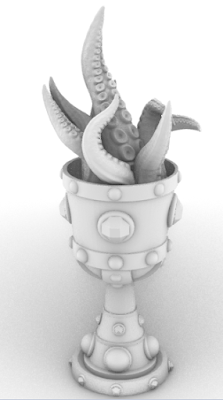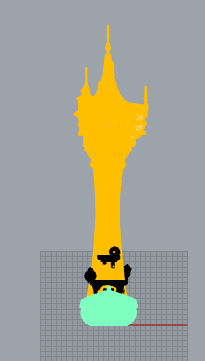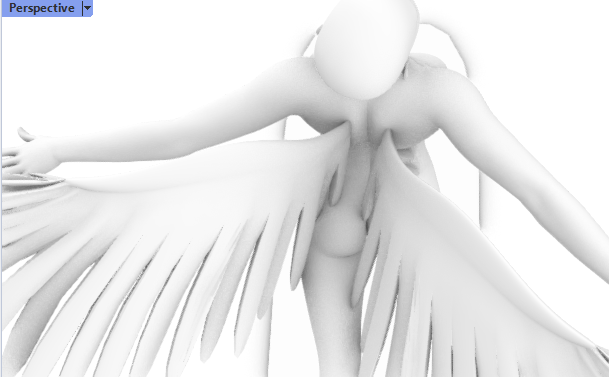[#2] Digital Mash-Up: The Remix
 |
| 10 Remixed Creations |
Remix Culture, also known as read-write culture, describes the way artists will combine, edit, rearrange, or otherwise create derivative works from an existing piece of art. The most prominent example of this is probably sampling of music, but it is also common in other areas of the art world. Other examples include open source software, ready-made art, graffiti, memes, fan art, and anything else that utilises existing creations in a new way.
Remix culture has grown with the availability of technology as well as increased sharing and communication over the internet. It has never been easier for an artist to share their work to the world with the internet and social media. Prior to the widespread availability of the internet, there was more of a Read Only media culture since the majority of people consumed media more passively and in a one-way direction through newspapers, magazines, radio, or television. Today, remix culture has opened up a reciprocal, two-way flow of dialogue that allows people to respond to art in new ways.
Though remix culture is common, it isn't always appreciated. Not everyone likes their art getting remixed or the original artist may object to the specific way their work has been used. Remix artists often must push the boundaries for acceptable remixing and may need to gamble a bit to see if it is challenged legally by the originating artist(s). Copyright, ownership and intellectual properties should be considered when remixing. The identity of original artists may get lost if a work goes through multiple remixes, particularly if they are not recognised properly in previous remixes. It is best practice to always cite the sources of the works you are using to give proper credit and show respect to the original creator. I have done this by linking to each of the models I used in my remixes.
In object design, it is common to combine or modify object designs into new works. That is what I have done this week using existing 3D models from the open repository website Thingiverse where creators share their designs. Minor edits, clipping, scaling, and rotations have been applied to combine the existing models into something new.
The 10 Remixes:
The first object I remixed is a combination of a goblet and tentacles. As will be seen in many of the other objects I remixed, I tried to incorporate juxtaposition by combining objects in ways we wouldn't see them in real life. The tentacles look as if they could begin to wriggle around at any moment. Definitely not something I would want to have in my goblet.
This object was created from an owl container with remove-able head. I removed the head and placed a flower in its place. I scaled the flower up to be quite large and properly join where the owl body ends and the base of the flower sits on top.
For this next remix, I took a detailed bee model, removed its head, and replaced it with the head of a dragon. I tried my best to make the joining of the bee and dragon head look as seamless as possible. I think it came together pretty well after playing with the rotation of the dragon head to align with the bee body properly. The combination of a dragon and bee create an intimidation creature, especially if it were dragon-scale instead of bee-scale! Does it fly around gathering pollen like a bee or does it spit fire and ravage the countryside like a dragon?Next up is a combination of a crab and a purse that I like to call my "crab bag." I combined a model of a purse for Barbie with a 3D scan model of an adolescent spider crab. I had to remove the body portion of the crab so that I could isolate the arms and legs to attach to the purse. The body was also too large to hide inside the purse with the legs still attached. To split the crab model, I used a solid box to block out where I wanted to split the crab and then applied the mesh splitting operation. I tried to place the arms and legs of the crab to be coming out of the side seams of the purse as if the claws were coming out of the bag but also a part of it.
This is a cookie with human teeth instead of the frosting. I used a model of an oreo cookie top, copying and flipping the top to create a base. I then placed the individual teeth from a set of models of adult teeth. I used mostly molars, rotating them to fit snugly together on the top and bottom but keeping the scale of the teeth the same relative to each other. The result is a very creepy and unpleasant looking cookie.
This remix fairy tale tower floating on a boat took a bit of clipping and rearranging to bring together. I started with the boat which needed the above deck building part removed (shown in black in the mesh view image). To do this I again used a box to block out what needed to be removed and used the mesh splitting function. Extra care was taken to make sure I only removed the part that was above the boat deck so that there wasn't an awkward box cut-out into the boat. I also had to remove the base of the tower that was too wide to sit on the boat deck. The resulting combination is something that belongs in a fantasy world, potentially housing a water wizard or mysterious creature.
This is a remix of a sword hilt and an arm with open hand. I started with the sword hilt and wanted to attach an organic limb to it as a juxtaposition while still keeping the approximate form of a sword. To attach the two objects together cleanly, I had to remove and adjust part of the base of the arm. I also tried to align and rotate the arm so that it was positioned properly with the hilt and the way someone might hold the object as a sword.
For my remaining objects, I went with combinations that have less juxtaposition and more general use. This water pump has had a flame object attached to look as if it is coming out of the spout. Without colour to know that it is fire, it could also be water which gives opportunity for multiple different uses.
My last remix is of a leaping woman to which I have attached wings. The jumping woman model wasn't situated along the X and Y directions but at a 45 degree angle to them so rotating the wings to align was tricky until I realised I should have just rotated the model to align with the X and Y directions first. I tried my best to make sure the wings were attaching to the back of the model at the shoulder blades and that the arms were not clipping into the wings. The remix makes the leaping woman look like she is ready to leave the ground, taking the first leap of a flight.
Out of the 10 digital mash-up remixes I put together, my favourites are the cookie with teeth, bee with a dragon head, and crystal hamster. I also really like how the leaping woman with wings and arm sword came together.


















Comments
Post a Comment